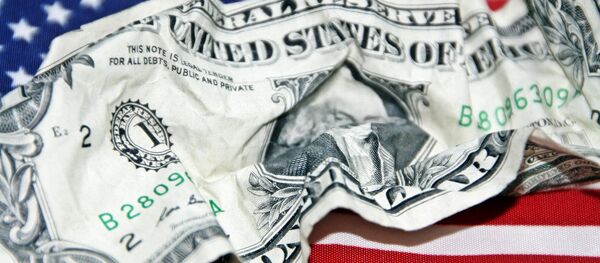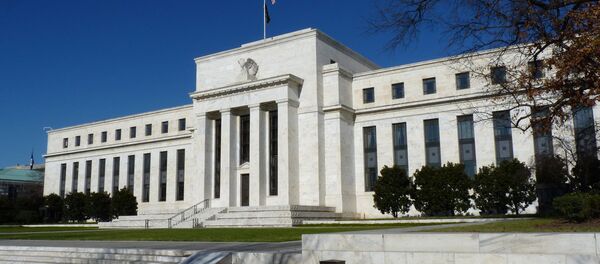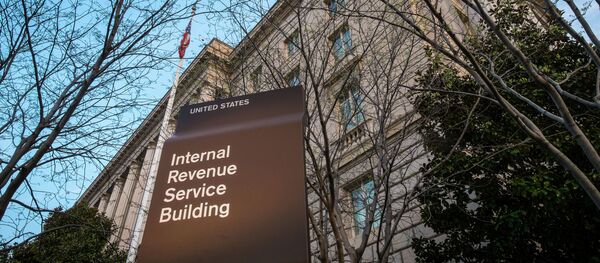During Friday’s trades, investors and stockbrokers across the globe focused on US jobs data, one of the benchmark macroeconomic indicators which determines market activity and overall sentiment. According to a report published today, there were 257,000 new hires in the US in January, a 17-year record in the amount of new jobs, along with the greatest hike in effective wages since 2008. The overtly optimistic US data rendered investors bullish at first, especially in the end-of-day trades in Europe. However, a massive sell-off of US Treasuries followed the publication of the jobs report, dragged most indices down worldwide as the allegations spread that the US Federal Reserve might increase its interest rate sooner than in May or June this year, as widely anticipated.
"It's a bit of a double-edged sword again. A very good (US jobs) figure would be seen as negative for the market, changing the outlook for interest rate hikes," Alexandre Baradez of IG France told Reuters. "It will also be interesting to see the potential damage from the drop in oil prices on the jobs in the US energy sector, with all the cuts in investments."
Most of Friday’s Asia-Pacific trading happened just prior to the publication of the US jobs report, and the mood in the markets was dominated by another factor, the slightly increased oil prices. Brent crude appreciated by 2.17%, to $57.80/bbl, WTI, however, changed little in price, trading at $51.69/bbl. In Japan, stocks advanced on the more expensive energy as it is believed to help PM Abe’s plan to bolster inflation and accelerate economic growth in the nation. The Nikkei 225 added 0.8% at the close with gains in the energy sector, however, the weekly dynamics in the index were negative, at —0.1%. The Topix Index, which includes a wider variety of Japanese equities, rose 0.5%. Traders and investors at the Tokyo Stock Exchange had been cautious though, avoiding risky deals ahead of the US jobs report.
Most of the remaining Asia-Pacific markets ended the day in the red, with S&P Asia 50 down by 0.18% and MSCI Asia APEX 50 retreating 0.37%. In China, Shenzhen Composite retreated 2.02%, Shanghai Composite shed 1.93%, while Hong Kong’s Hang Seng posted smaller losses, just at —0.35%. Mainland China’s markets have retreated for several consecutive days now as the People’s Bank of China (PBOC) has failed to deliver sufficient policy measures to boost the ever-weakening economy. Beijing's latest Reserve-Requirement Ratio (RRR) cut, undertaken on 4 February, did not have a significant impact on the markets, given the rally of rate cuts all across the region; the most prominent, and efficient, of these was the one in Australia.
Australian shares continued their rally Friday, with the S&P/ASX 200 Index adding 0.16%. Friday was its 12th consecutive day of gains as the Aussie dollar weakened, making local exporters more competitive worldwide. Further monetary easing was promised by the regulatory authorities as well, to the cheers of stock markets.
European equities advanced closer to the end of the day, even tipping their seven-year highs after the US news arrived. However, the concern of a looming tightening in the US monetary policy spread quickly in Europe as well, and most indices closed in the red. The pan-European FTSEurofirst Index added 0.2%, in line with the Bloomberg European 500 Index, up 0.14%. Other indices did not fare that well, and the ongoing standoff between the new leftist government of Greece and that nation’s creditors over the excessive debt, only added nervousness in Friday’s trades. In London, the FTSE 100 dipped 0.18%, the German DAX lost 0.54%, and France’s CAC 40 retreated 0.26%. In Switzerland, the SMI Index rose by 0.51%, although the local telecommunications enterprise, Sunrise, entered the stock market with huge gains, jumping 7.4%.
There is also the earnings season in Europe, and the companies posted mixed results. Tech and telecoms are generally up on positive earnings data, examples include Alcatel-Lucent (+4.7%) and Hexagon (+8.9%), while the British sugar and agriculture giant Tate & Lyle was down 12% as their profits dipped, and the Danish transportation enterprise DSV shed 3.4%, again as a result of weak performance.
Wall Street retreated after the overtly optimistic US jobs data appeared. The Dow Jones Industrial Average fell 0.34%, the S&P 500 ended down 0.34% as well, and the Nasdaq retreated 0.43% as yields on US Treasuries rose the most sine 2010 Friday, adding 0.13% to 0.65%, according to Bloomberg data.
Concerns that the Fed will raise interest rates sooner than expected amidst stronger US economic performance were the main reason dragging indices into the red. However, the Greek risks added to the gloomy sentiment. The equities of the real estate company Simon Properties lost 4% of their value, while the utilities sector retreated along with most other sectors. The notable exception is the financial sector, which gained 0.7% as a possible rate hike and more expensive credit mean more money in banks.
“The market is starting to realize that we may get earlier hikes than expected,” Mohamed El-Erian of Allianz SE told Bloomberg.
There are voices, however, that are skeptical about the sustainability of America’s economic success. Record gains in employment do not necessarily imply that the newly-created jobs are economically meaningful and profitable. Bill Gross, the ex-head of the world’s biggest bond fund, Pimco, said Friday that the Fed should wait until the US economy reaches a quality growth of 4-5% before making any moves to raise interest. He also expressed concern regarding the slow growth in America’s real wages.
“We can create jobs, but can we create profitable jobs and productive jobs that pay money to elevate labor back into the old middle class?” Gross told Bloomberg. “I don’t think we’ve done that and that’s what we need to do.”
Shares of Twitter skyrocketed by 16.4% Friday due to surprisingly good earnings data. Trading volumes on Wall Street were thinner than the average 7.9 bln shares bought and sold, at 7.7 bln.
During the week, the S&P 500 rose by 3% and Nasdaq added 2.4%, meaning the general trend remains positive, and concerns regarding a Fed hike are slightly exaggerated.




